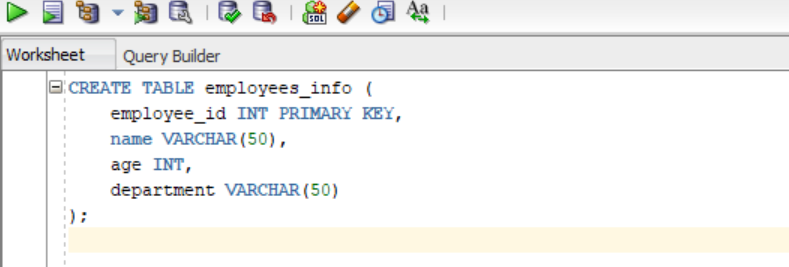RDBMS Kernel is one of the important foundations of the RDBMS(Relational Database Management Systems), playing a very important and crucial role in managing the data, executing query commands, and ensuring data integrity and concurrency control.
Understanding the functionality of RDBMS kernels is important for database developers and administrators to optimal database performance and reliability.
Without a powerful RDBMS Kernel, ensuring the accuracy, reliability, and security of this robust amount of data would be a massive challenge. The RDBMS Kernel acts as the guardian of this data, organizing seamless interactions between users, applications, and the underlying data storage, ensuring that critical business operations run smoothly and efficiently.
What is the RDBMS Kernel?
The RDBMS kernel is one of the important parts of the RDBMS, including the fundamental parts of database management. It serves as the mediator, possibly making smooth interactions between users/applications and the fundamental data storage.
The kernel summarizes the complexity, providing a cohesive interface for data manipulation while seamlessly managing complex operations.
Popular RDBMS kernels include:
- MySQL or Oracle MySQL
- PostgreSQL
- SQLite
- Microsoft SQL Server
- Oracle Database
- IBM Db2
Functionality of RDBMS Kernel
It acts as the main engine of a database system, responsible for managing various aspects such as data structures, query execution, transaction management, and concurrency control. It behaves as an intermediary between applications or users and the physical data storage, simplifying data storage and retrieval processes.
Each of these databases has its kernel implementation, but they all share common functionalities required by an RDBMS, such as query processing, transaction management, and data storage.
Key Functions of the RDBMS Kernel
- Query Processing and Optimization: The RDBMS kernel is responsible for handling SQL queries efficiently. It not only interprets these queries but also optimizes in this way so that its ensure speedy data retrieval. By refine the execution of queries, it increase the overall performance of the database system.
- Transaction Management: Transactions is one of the important part within a database. The kernel supervise these transactions, confirming that they grasp the principles of ACID (Atomicity, Consistency, Isolation, Durability). This define that database operations are carried out reliably and consistently, even in the event of system faults or interruptions.
- Data Storage and Access: It explain how managed data is stored and accessed lies at the core of the RDBMS kernel’s responsibilities. It handles the physical and logical organization of data, confirming that it is stored efficiently and can be retrieved seamlessly or error free. This involves some tasks such as indexing, data partitioning, and optimizing storage structures.
- Concurrency Control: In database environments where multi-user is present, simultaneous access to data by multiple users can lead to potential conflicts and inconsistencies. The kernel implements concurrency control mechanisms to manage and coordinate access to shared data resources. By regulating access and ensuring data integrity, it enables concurrent transactions to execute safely without interfering with each other.
- Security and Access Control: Main goal is to protect the confidentiality, integrity, and availability of data is supreme in any database system. The RDBMS kernel enforces robust and vast security measures and access controls to safeguard sensitive information. This involves authentication, authorization, encryption, and auditing functionalities to prevent unauthorized access and moderate security risks.
Significance of the RDBMS Kernel
The RDBMS kernel symbolize the backbone of modern data management systems. Its significance transcends mere functionality, extending to the activity of reliability, scalability, and interoperability. By abstracting complexities and providing a standard interface, the kernel lift developers and users to navigate the complexity of database management with ease and efficiency.
Example with Oracle Database
let’s use an Oracle database example to understand how this Oracle Database Kernel works:
Suppose there be a simple database named “employees” with a table named “employees_info“. This table stores information about employees, including their ID, name, age, and department.
Here is the complete SQL command:
CREATE TABLE employees_info (
employee_id INT PRIMARY KEY,
name VARCHAR(50),
age INT,
department VARCHAR(50)
);
INSERT INTO employees_info (employee_id, name, age, department) VALUES
(1,'John Doe', 30, 'Marketing');
INSERT INTO employees_info (employee_id, name, age, department) VALUES
(2,'Ron Doe', 40, 'Banking');
select * from employees_info;
Creating Table “employees_info”:
Perform SQL commands to create the “employees_info” table with suitable columns and constraints.
Provided a screenshot or code snippet showcasing the table creation process.

Create Table “employee_info”
Inserting Data into the Table:
The image shows how to insert sample data into the “
employees_info
” table using SQL insert commands.

Insert data into table
Retrieving Data from the Table:
Now, let’s say you want to retrieve details of all employees. You can do this using a SQL query:

select details of all employees
Now what’s Kernel do:
When you execute this query “select * from employees_info;” the oracle kernel interprets the SQL command, optimizes the query execution plan, accesses the data stored in the “employees_info” table, filters out all the records of the employee table, and returns the details of all the employees.
Kernel produce an output:

Conclusion
In conclusion, the RDBMS kernel act as the backbone of RDBMS (relational database management systems), providing efficient data management, query execution, transaction handling, and concurrency control. It is important for efficient database management. By grasping its functionalities, database professionals can optimize query performance, ensure data integrity, and enhance overall system reliability.
Share your thoughts in the comments
Please Login to comment...